

|
|
Select photographs of my many visits to The Missions of the United States South and Southwest built by Spain and Mexico between 1565 and 1823. All photographs taken by Kenneth A. Larson. All rights reserved. © 2008 - 2013. |
| Explanation. |
Founded May 24, 1690
|
Personal ObservationsI visited this site in January 2009. The park was uncrowded and quiet. The reproduction wooden Mission church is small. |
 Mission Art & Photo-Art |
|
San Francisco de los Tejas was established in 1690 but short lived and abandoned in 1693. This was not the end of the story, it was re-established several times in different locations, finally ending settling in San Antonio where it stands today. San Francisco de los Tejas was the first Spanish Mission founded in Tejas (Now known as Texas). The Mission was established to solidify the Spanish-French boundary from French intrusions from the east and as a response to the La Salle (French) expedition. Alonso de Leon accompanied by 110 soldiers and four friers (Damián Massanet, Miguel de Fontcuberta, Francisco Casañas de Jesús María, and Antonio de Bordoy) left Mondova, Mexico in March 1690 and traveled to a location a little west of the Neches River along San Pedro Creek, just east of present-day Augusta, among a Nebedache village. The group arrived on May 22, 1690. The Nebedache were the at the west extent of the Hasinai Confederacy. A chapel was established on May 24 to celebrate the feast of Corpus Christi. The church and other buildings were believed to have been built in three days (May 27-31) of wood and nothing remains today. Father Massanet took possession of the mission on June 1, 1690 and the church was dedicated the same day. De León and Massanet left the other three priests and three soldiers at the Mission as they began a return march to Coahuila on June 2. From the Winter of 1690 to the Summer of 1691, epidemic and drought made life difficult for the Mission. In July 1691 a second expedition reached the Mission. Domingo Terán de los Ríos with his interpreter Meunier, accompanied by fifty soldiers, ten priests, and three lay brothers headed by Massanet. They also brought a herd of cattle, sheep, and more than a thousand horses. In the preceding year, Father Fontcuberta had died (February in an epidemic) and another Mission, Santísimo Nombre de María (provide link) had been founded in October 1690, the second in Tejas. Horse and supplies had been drained by an expedition to the settlements of the Kadodacho Indians in November and December 1691. It was decided not to found any more Missions in the area. For his return march on January 9, 1692, Terán took six disillusioned friars with him and had to commandeer animals from the missions. Left at the Mission were replacement priests and nine soldiers. In the same month, floods on the Neches destroyed Santísimo Nombre de María Mission. The year 1692 was no kinder to the Mission. Summer saw drought and dead cattle. The difficulty in supplying these remote Missions increasingly became a problem. In February 1693, the viceroy ordered Gregorio de Salinas Varona to lead a relief expedition from Monclova arriving June 8, 1693. The summer of 1693 saw more drought. Salinas found illness and death, including one priest. The Nebedache believed baptismal waters were causing diseases and they resisted the new religion. The supplies brought were insufficient and Salinas left six days later taking two more priests with him. Conditions deteriorated and on October 25,1693, the friars decided to abandon the Mission. Vestments were packed, canon and bells were buried, and the buildings were burned. Four soldiers chose to remain and the priest made their way back to Monclova, arriving on February 17, 1694. Fray Francisco Hidalgo opposed the abandonment of the Mission but it wouldn't be until 1716 that the Mission was reestablished at another location with another name, Nuestro Padre San Francisco de los Tejas Mission. The Mission was reestablished several times in other locations: Nuestro Padre San Francisco de los Tejas (East Texas), San Francisco de los Neches (East Texas), San Francisco de la Espada (Auston), and San Francisco de la Espada (San Antonio). [ add links to reestablished Missions] The actual site is probably a few miles west of San Francisco de los Tejas State Park that contains a replica of the church. March 1690: Captain Alonso de Leon and company leave Mondova, Mexico. May 1690: The company establishes the Mission, the first in Texas. June 1, 1690: The Mission is dedicated and three priests and three soldiers stay as Alonso de Leon returns to Mexico. October 1690: Santisimo Nombre de Maria is founded a few miles away. It is the second Texas Mission but short lived. Winter 1690 to Summer 1691: Epidemic and drought. An expedition reaches the Mission and is warned to take the missionaries away. Winter 1691-92: The expedition returns to Mexico, taking Mission livestock and leaving a replacement priest and nine soldiers. Summer 1692: Drought and cattle die. Spring 1693: Floor destroys Santisimo Nombre de Maria. Summer 1693: More drought and relief expedition arrive just in time. Fal 1693: Missionaries warned to leave. The Mission is abandoned October 25, 1693. Buildings are burned, bells and canon are buried. The actual site is probably a few miles from the State Park that contains a replica. |
Address and DirectionsHighway 21near Weches, between Crockett and Nacogdoches. East Texas. Park reservations: 512-389-8900 |
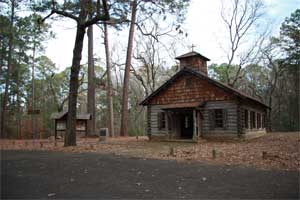 Front of recreated church. |
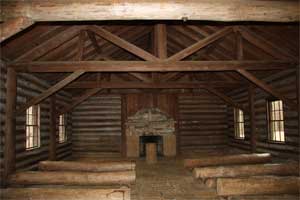 Interior of recreated church. |
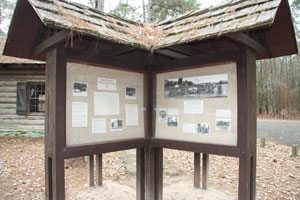 Information Kiosk. |
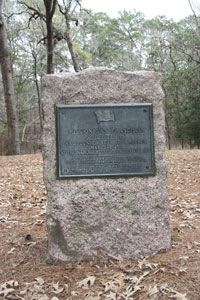 Historic marker. |
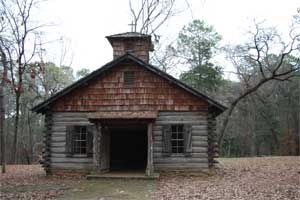
|
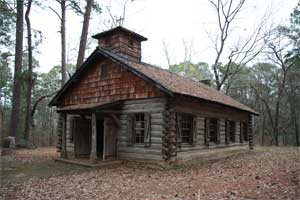
|
| Exterior front of reproduction wooden church. | |
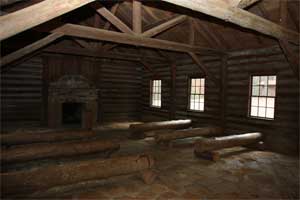
|
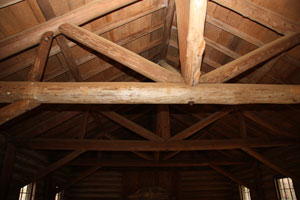
|
| Imterior of reproduction wooden church. | |
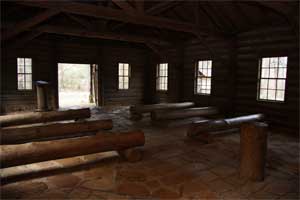
|
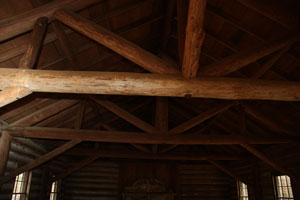
|
| Imterior of reproduction wooden church. | |
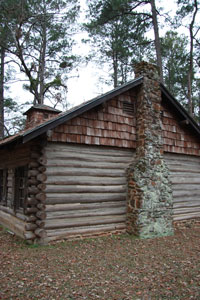 Exterior back of church. |
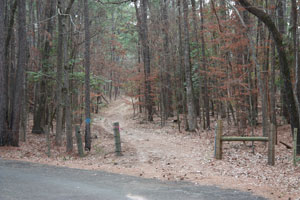 This may be a remnant of Camino Real. |

|

|

|
| Note:This is not the official site for any of the places shown in US Mission Trail. US Mission Trail is not responsible for accuracy of the information. Hours of operations, prices, and exhibits are subject to change without notice. |
|
Support this Web Site I hope that you find this web site helpful. It started because of my love for the California Missions and interest in History and a desire to share my photographs and tales of my adventures. I don't allow paid advertising. This web site is for your benefit and enjoyment and I make no profit on it. For twenty years it has been supported primarily from my regular paycheck as a Set Designer. A non-tax deductable donation helps cover the cost of operating this web site and may be made to Kesign Design Consulting through PayPal. | ||
|
If you are in the need of a designer, please see my Set Designer portfolio site Set Design Portfolio. |
| Or donations can be mailed to the address on the contact page. |
|
Links
Home |
Contact |
Sales |
Ken Larson |
K L Images |
Places Earth
|

|
This site maintained by Kenneth A. Larson. Copyright © 2004 - 2023, Kenneth A. Larson. All Rights Reserved. Website content including photographic and graphic images may not be redistributed for use on another website. |

|

|

|